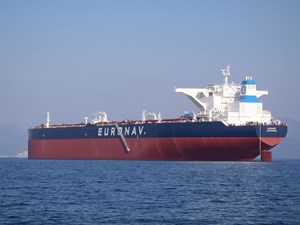Shipping American oil to China while avoiding American terminals, the case of the supertanker switcheroo
NEW YORK (Bloomberg) -- How can a supertanker, loading American oil without coming within a thousand miles of the Texas or Louisiana coast, avoid coming to the U.S.? Here's how.
The Alsace is steaming for China laden with about 2 MMbbl of West Texas Intermediate crude after spending three weeks in the Caribbean, according to ship-tracking data and a document seen by Bloomberg. It received its cargo via two ship-to-ship transfers and one terminal visit in the U.S. Virgin Islands.
For reasons that aren’t entirely clear, the Alsace didn’t go to the U.S. coast to get the oil. Instead, two ships -- the Almi Galaxy and Ionic Aspis -- traveled some 2,000 mi from Beaumont, Texas, and arrived in late March at Limetree Bay oil terminal at St. Croix. The Almi Galaxy offloaded its contents via ship-to-ship transfer to the Alsace. The Ionic Aspis, which had arrived earlier, offloaded its cargo into a tank at the terminal where the supertanker later picked it up, according to a person familiar with the matter who asked not to be identified because the purchases aren’t public.
After loading at St. Croix, Alsace set course for Aruba. Off its coast, the supertanker received more oil from the Serenea, which had also loaded in Beaumont, according to the person familiar and ship-tracking data.
Alsace was chartered by Unipec, the trading arm of China’s largest refiner China Petroleum and Chemical Corp., known as Sinopec, the person said. Unipec has been using tanks leased by Sinopec at Limetree Bay’s oil terminal at St. Croix. But the Asian trader has previously loaded VLCCs in the Gulf of Mexico to send American oil overseas.
Alsace is now signaling that it’s heading to China, expected to reach Zhoushan around May 19.



